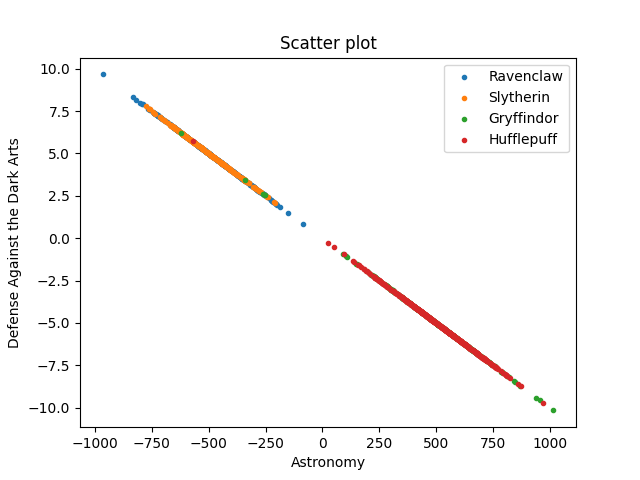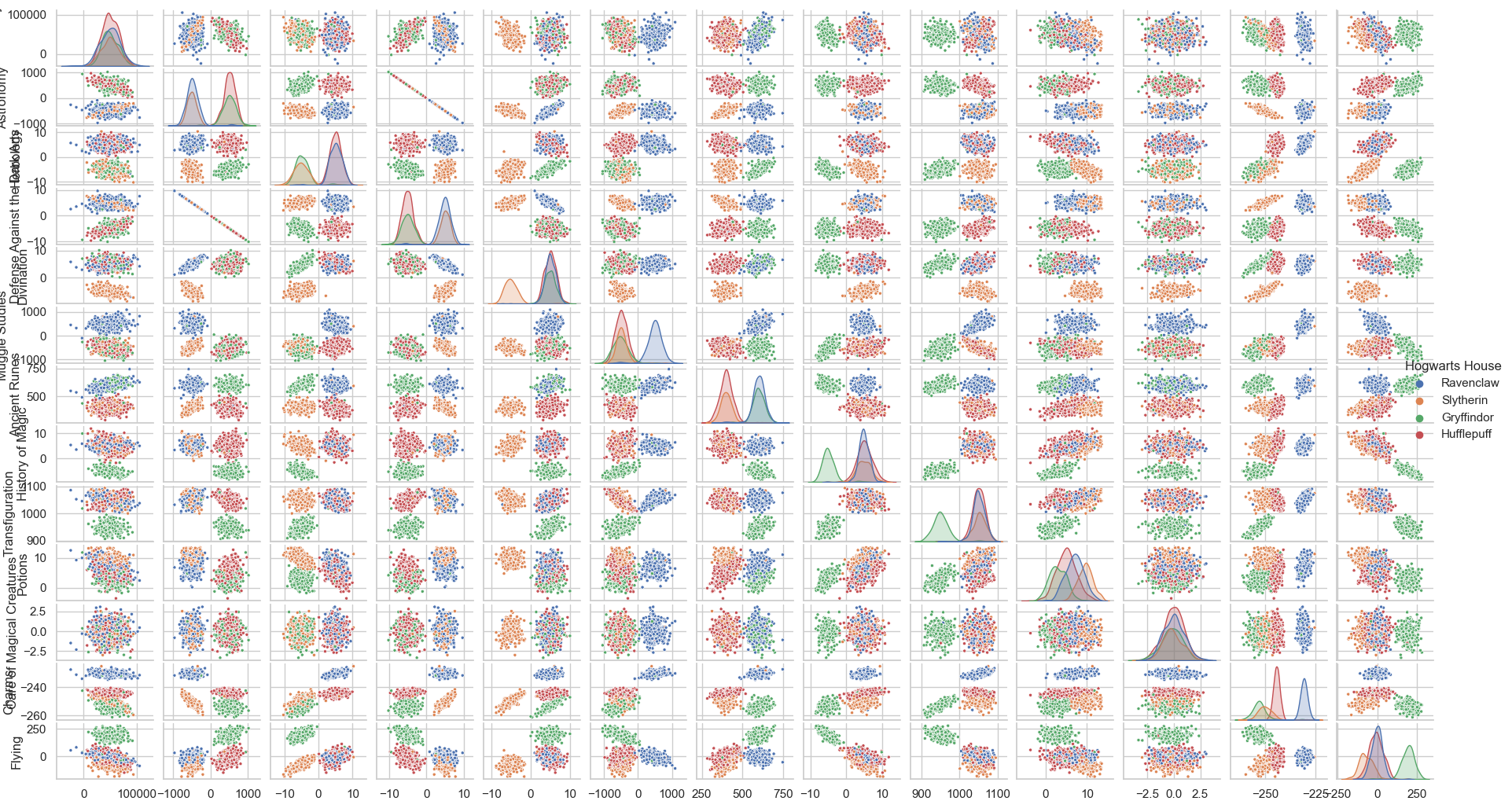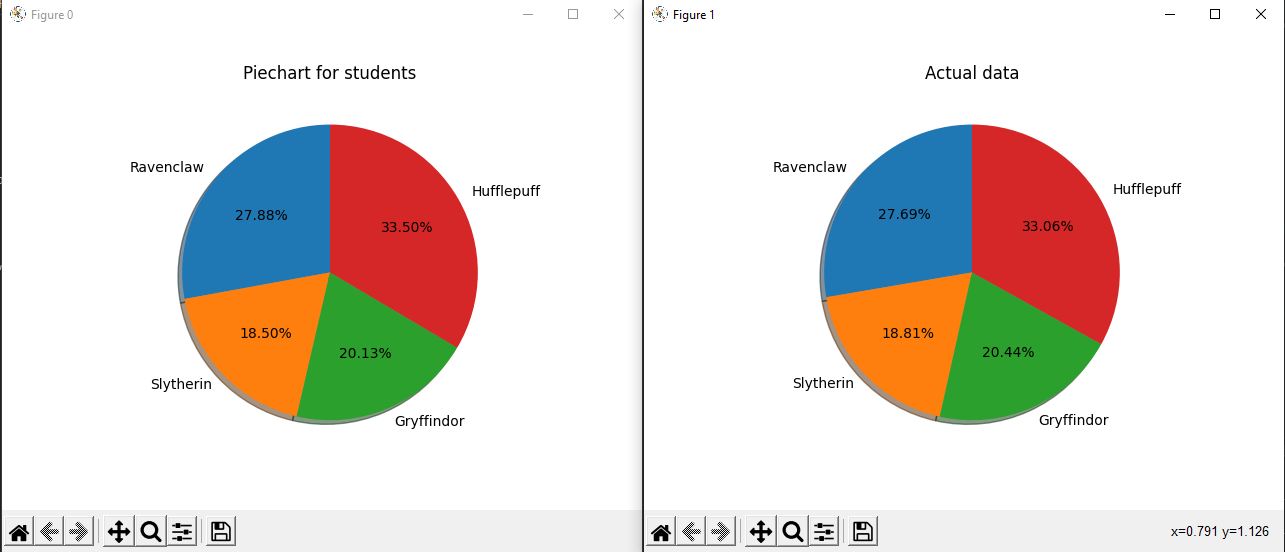Datascience X Logistic Regression (subject)
Dans ce projet DataScience x Logistic Regression, vous allez poursuivre votre exploration du Machine Learning en ajoutant divers outils à votre escarcelle. In this DataScience x Logistic Regression project, you will continue your exploration of Machine Learning by adding various tools to your purse.
You will implement a linear classification model, in the continuity of the subject linear regression: a logistic regression.
In summary:
- You will learn how to read a dataset, visualize it in different ways, select and clean your data.
- You will set up a logistic regression which will allow you to solve classification problems.
Create a virtual environment and activate it
On windows:
python -m venv venv
.\venv\Scripts\activate.batInstall the pre-requirement:
pip install -U -r pre-requirements.txtExecute setup.py:
- for dev:
pip install --editable .[dev]- For user:
pip install .There is 4 programs dedicated to Data Science:
- describe is use for collecting datas in the dataset then display some informations about
> describe data\dataset_train.csv -h
usage: describe [-h] dataset
DataScience Describe program.
positional arguments:
dataset input a csv file.
optional arguments:
-h, --help show this help message and exit
>
Arithmancy Astronomy ... Charms Flying
Count 1566.000000 1568.000000 ... 1600.000000 1600.000000
Mean 49634.570243 39.797131 ... -243.374409 21.958012
Std 16674.479577 520.132330 ... 8.780895 97.601087
Min -24370.000000 -966.740546 ... -261.048920 -181.470000
25% 38511.500000 -489.551387 ... -250.652600 -41.870000
50% 49013.500000 260.289446 ... -244.867765 -2.515000
75% 60811.250000 524.771949 ... -232.552305 50.560000
Max 104956.000000 1016.211940 ... 0.000000 279.070000
Unique 1540.000000 1568.000000 ... 1600.000000 1546.000000
Freq 2.000000 1.000000 ... 1.000000 3.000000
[10 rows x 13 columns]- histogram display a histogram of wich feature have homogenous scores between the 4 houses
> histogram data\dataset_train.csv -h
usage: histogram [-h] dataset
DataScience Histogram program
positional arguments:
dataset input a csv file.
optional arguments:
-h, --help show this help message and exit- scatter_plot regroup two features that are similare on scores
> scatter_plot data\dataset_train.csv -h
usage: scatter_plot [-h]
dataset [feature_1]
[feature_2]
DataScience Scatter_plot program.
positional arguments:
dataset input a csv file.
feature_1
feature_2
optional arguments:
-h, --help show this help message and
exit- pair_plot regrouping all data vs all data
> pair_plot data\dataset_train.csv -h
usage: pair_plot [-h] dataset
DataScience Pair_plot program.
positional arguments:
dataset input a csv file.
optional arguments:
-h, --help show this help message and exit- logreg_train is use to get weights from the train dataset for be used in predict program.
> logreg_train data\dataset_train.csv -h
usage: logreg_train [-h] [-e EPOCHS] [-s] [-lo] [-l log-level] [-lr LR] [-a ACCURACY] dataset
Logistic regression training program for DataScience X Logistic Regression project.
positional arguments:
dataset input a csv file.
optional arguments:
-h, --help show this help message and exit
-e EPOCHS, --epochs EPOCHS
Epochs
-s, --show Show some graphic for comprehension.
-lo, --loss Show graphic function of loss for each versus of features.
-l log-level, --level log-level
Choices: ERROR, WARNING, INFO, DEBUG. The parameter set by default is INFO.
-lr LR, --lr LR Learning rate
-a ACCURACY, --accuracy ACCURACY
Minimal accuracy, Set to 97 by default.- logreg_predict use for predicting in wich house the student choose will go.
> logreg_predict data\dataset_test.csv weights.csv -h
usage: logreg_predict [-h] [-l log-level] [-p] dataset weights
Logistic regression predict program for DataScience X Logistic Regression project.
positional arguments:
dataset input a csv file with the dataset.
weights input a csv file with the weights.
optional arguments:
-h, --help show this help message and exit
-l log-level, --level log-level
Choices: ERROR, WARNING, INFO, DEBUG. The parameter set by default is INFO.
-p, --piechart print a piechart for the resultsOn the predict program, if you give a dataset with hogwarts houses already filled and the option -p, you'll get a comparison of the houses obtained by the program and the houses already in the dataset.
We add a little script usefull for compare if a result given by predict is good or not with an correct prediction:
> check houses.csv data\dataset_truth.csv -h
usage: check [-h] [-l log-level] dataset1 dataset
positional arguments:
dataset1 First dataset to compare.
dataset Second dataset to compare.
optional arguments:
-h, --help show this help message and exit
-l log-level, --level log-level
Choices: ERROR, WARNING, INFO, DEBUG. The parameter set by default is INFO.
> check houses.csv data\dataset_truth.csv -l=DEBUG
DEBUG - Diff line 25, index = 23
'Ravenclaw' vs 'Slytherin'
DEBUG - Diff line 100, index = 98
'Hufflepuff' vs 'Ravenclaw'
DEBUG - Diff line 281, index = 279
'Hufflepuff' vs 'Slytherin'
DEBUG - Diff line 367, index = 365
'Gryffindor' vs 'Slytherin'
INFO -
Accuracy: 0.99pytest .\tests



